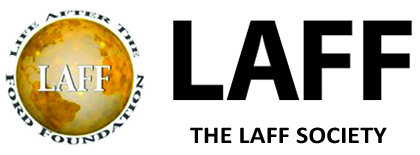
If you were to try to draw out a diagram of the U.S. government's toolkit for fighting global poverty, you would quickly find yourself submerged in a spaghetti bowl of confused and conflicting responsibilities, mandates and authorities, with no clear goals, and no shared vision. This confusion on paper leads to confusion on the ground, with very real costs for U.S. foreign policy and the world's poor.
For example, in El Salvador, the responsibility for U.S. aid is shared between 11 different government agencies, each with different agendas and sometimes conflicting priorities. In Kenya, the United States procures its own HIV/AIDS test kits and AIDS drugs at four times the cost other donors pay. In Bangladesh, the United States collects several times the amount in tariffs than it provides in development assistance, essentially taxing the very trade U.S. leaders tout as the solution to poverty. In Cambodia, government officials typically find it easier to get information on aid resources from the Chinese government than from the U.S. government. And in Afghanistan -- where a "civilian surge" of humanitarian aid efforts has been promised -- two separate USAID contractors recently discovered by chance they were doing virtually the same project, in the same town.
Seeking to address problems like these, U.S. President Barack Obama is expected in the coming weeks to consider a report from his National Security Council staff containing proposals for reorganizing U.S. foreign aid to make it more effective and accountable.
The fact that one-third of the planet -- 2 billion people -- remains trapped in poverty poses a singular challenge to the interests and values of the United States. Obama agrees, and has framed development as one of the three pillars of U.S. national security, along with defense and diplomacy. But his. government is still trying to address this 21st-century challenge with a 20th-century toolkit.
Previous attempts to reform the aid system have only complicated the situation. The Foreign Assistance Act of 1961 integrates 140 different goals and priorities and 400 directives, and is executed by at least 12 departments, 25 different agencies, and almost 60 government offices. Moreover, successive presidents and congresses have often chosen to work around the act, enacting more than 20 additional pieces of legislation to achieve their foreign-aid goals. As a result, the existing system's mission has become muddled and confused, cluttered with earmarks, special coordinators, and loopholes.
The Obama administration set out to tackle this challenge by mandating a presidential review of global development policy. Secretary of State Hillary Clinton -- a development leader in her own right -- has launched the Quadrennial Diplomacy and Development Review (QDDR), a State Department and USAID process aimed at revamping the department's operating procedures. But without a clear strategy, the QDDR promises to be an operational plan written in the absence of a guiding mission.
By merely tinkering with the existing system without a clear a vision for what U.S. development efforts should achieve, the Obama administration could end up making things worse, not better. Each new plan, legislative proposal, initiative, or objective further confuses the existing system. Together, they represent a failure of leadership and strategy that hobbles U.S. efforts to fight global poverty.
The administration needs to step back and deliver a clear articulation of mission and strategy to guide reform -- a National Strategy for Global Development. For those of us in the development community, such a strategy should answer a few basic questions. What are the intended outcomes of U.S. global development policy? How do we know we are investing in the right things? How do we know if development assistance efforts are successful? And how can we best help poor countries -- and poor people -- lead their own development?
Obama's strategic goal should be to support those citizens and governments who are working together to achieve private-sector driven economic growth that is broad-based, equitable, and sustainable. The strategy's scope should not be limited to foreign aid, but should reflect the impact of other global policies, such as trade and migration, on development outcomes. The strategy should link global development and humanitarian response both to American values and to U.S. national interests. Importantly, it should clarify that it is always in the U.S. interest to adhere to the principles of effective development and humanitarian response and to seek sustainable development outcomes even in those settings where the United States needs to employ development aid for diplomatic or defense purposes.
Currently, much time and effort is being invested in trying to figure out how to make sense of the organizational chart and how to get all the agencies to talk to one another. But no one is articulating any sort of logic for what they should all be doing in the first place. Issuing an "org chart" without first articulating a clear vision amounts to nothing more than stirring the spaghetti bowl. That would be a loss for both the Obama administration and millions of people living in poverty.
Imagine, instead, each agency, program, and development partner contributing its particular strengths toward one clear, shared goal of reducing global poverty. That would be a legacy. But time is running out. The government went a year without a USAID administrator, and two years could easily slip by before there's a strategy. Now is the time for the Obama administration to step back from simply stirring the spaghetti and finally articulate a strategic vision for how the United States will fight global poverty.



